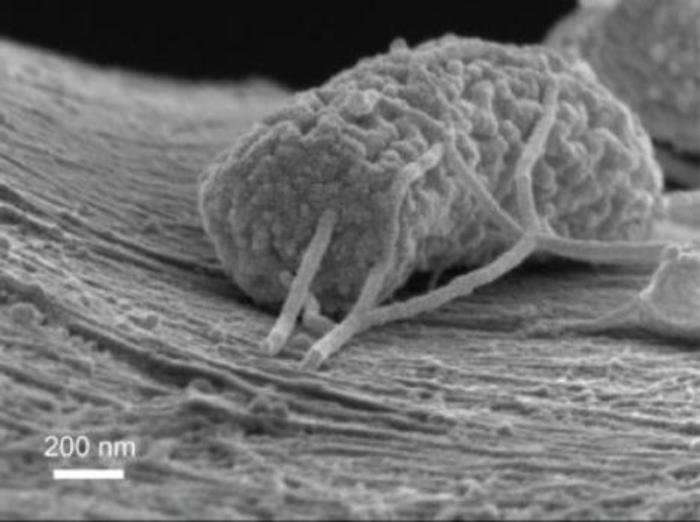More than 100 of the microbes can fit side by side in the width of a human hair; the microbes are white tubes; they are attached to the carbon filaments of the battery; the tendrils are the "wires" referred to; images were taken by scanning electron microscope. Credit: Xing Xie, Stanford University
PALO ALTO, Calif., Sept. 17 (UPI) -- Naturally occurring "wired microbes" could be mini power plants, producing electricity as they digest plant and animal waste, researchers in California say.
Scientists at Stanford University, writing in the Proceedings of the National Academy of Sciences, describe their work to create a "microbial battery" they say could be used in places such as sewage treatment plants.
Another potential use, they said, would be to break down organic pollutants in the "dead zones" of lakes and coastal waters where fertilizer runoff and other organic waste can deplete oxygen levels and suffocate marine life.
Scientists have long known of the existence of what they call exoelectrogenic microbes -- organisms that evolved in airless environments and developed the ability to react with oxide minerals rather than breathe oxygen as we do to convert organic nutrients into biological fuel.
With the microbial battery, they Stanford researchers say they've created a simple yet efficient design that puts these exoelectrogenic bacteria to work.
At the battery's negative electrode, colonies of wired microbes cling to carbon filaments that serve as efficient electrical conductors.
"You can see that the microbes make nanowires to dump off their excess electrons," environmental engineer Craig Criddle said.
As the microbes ingest organic matter and convert it into biological fuel, their excess electrons flow into the carbon filaments and across to the positive electrode, Criddle said.
The Stanford researchers said they estimate the microbial battery can extract about 30 percent of the potential energy locked in wastewater, a similar efficiency level at which the best commercially available solar cells convert sunlight into electricity.
The researchers acknowledge there is far less energy potential in wastewater but say the microbial battery is worth pursuing because it could offset some of the electricity now use to treat wastewater.















